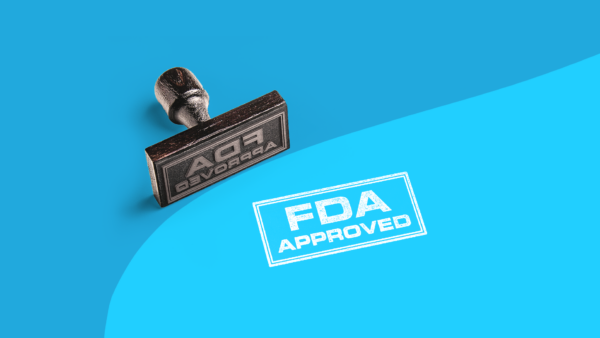Common pioglitazone side effects | Serious side effects | Heart failure | Bone fractures | Side effects timeline | Contraindications | Warnings | Interactions | How to avoid side effects | How to treat side effects
Pioglitazone, also prescribed as the brand-name medication Actos, is a generic prescription drug that helps control blood sugar levels in people with Type 2 diabetes mellitus. Often combined with other glucose-lowering drugs such as metformin, pioglitazone is a thiazolidinedione, one of only two drugs in that class. It works by making muscle and fat cells more sensitive to insulin, so these cells take in more blood glucose.
Unlike other antidiabetic drugs, pioglitazone only works when insulin is present, that is, right after eating. So low blood sugar is not a common side effect when it’s taken alone, but it can contribute to low blood sugar when combined with other antidiabetic drugs. It does, however, have other notable side effects that people should be aware of.
Common side effects of pioglitazone
The most common side effect of pioglitazone is infections of the upper respiratory tract. However, when combined with other diabetes drugs, the most common side effect is fluid retention and swelling. The most common side effects of pioglitazone are:
- Upper respiratory tract infections
- Headache
- Stuffy sinuses
- Muscle pain
- Sore throat
- Fluid retention and swelling
Side effects are most likely to happen when pioglitazone is combined with sulfonylurea or insulin. Most people taking such a combination can expect to have side effects. The most common are:
- Fluid retention and swelling
- Low blood sugar
- Upper respiratory tract infections
- Weight gain
- Urinary tract infections
Serious side effects of pioglitazone
The most serious side effects of pioglitazone are:
- Congestive heart failure
- Liver dysfunction
- Diabetic macular edema
- Increased risk of bladder cancer
- Bone fractures (in women)
Pioglitazone and heart failure
The worsening of pre-existing congestive heart failure is the most serious side effect of pioglitazone. The estimated incidence is between 1% and 6%, which is high enough for the FDA to include a boxed warning on the drug information sheet. As worrisome as that sounds, the risk only applies to people who already have congestive heart failure. People with severe heart failure cannot take the drug. People with mild to moderate heart failure can, but with a lot of extra monitoring. However, even those without congestive heart failure should be familiar with the warning signs. The most important is swelling. If swelling is experienced while taking pioglitazone, be sure to tell the prescriber. The risk of congestive heart failure is higher in patients who are also taking insulin, those over 65 years of age, and those taking higher doses of pioglitazone. It is recommended that those patients with mild heart failure who need to be started on pioglitazone be given 15 mg once daily.
Pioglitazone and bone fractures
Women taking pioglitazone experience almost twice as many bone fractures as other women. In one study, 5% of postmenopausal women taking pioglitazone for three years had bone breaks, usually in the hands, feet, or lower legs. Men are also at an increased risk for fractures. The cause is not understood, especially since hip and spine breaks are the most common fractures in postmenopausal women. Based on the final analysis, women, especially postmenopausal women, taking pioglitazone should take measures to preserve bone health. Caution should be used in women with osteoporosis or risk factors for osteopenia. Bone density tests may sometimes be required.
How soon do pioglitazone side effects start
Many of the side effects of pioglitazone are delayed side effects including infections, swelling, sore throat, weight gain, and most serious side effects. A few side effects—headache, muscle pain, and low blood sugar can happen shortly after starting pioglitazone.
How long do pioglitazone side effects last?
Some of the mild side effects such as headaches may get better over time. Infections and related problems may recur regularly. Low blood sugar will need to be corrected, though, with either change in doses or drugs. Unfortunately, some serious side effects such as worsening heart failure, fractures, bladder cancer, or macular edema may have long-term consequences even after the drug is discontinued.
What are the long-term side effects of pioglitazone?
Pioglitazone is used for as long as it works provided adverse effects are tolerable. No side effects due to long-term use have been identified. However, healthcare professionals are advised to regularly check for symptoms of heart failure. This isn’t because heart failure is an effect of pioglitazone, but because the drug could worsen heart failure if it does develop.
Pioglitazone contraindications
Pioglitazone is never prescribed to people with:
- Severe heart failure (Class III or IV heart failure)
- Bladder cancer
- Diabetic ketoacidosis
- Any history of an allergic reaction to pioglitazone
Pioglitazone is never used to treat Type 1 diabetes.
Pregnancy
Based on animal studies, there is a possibility that pioglitazone can cause birth defects. Healthcare providers are cautious and only prescribe it when necessary to pregnant women.
Breastfeeding
No one knows if pioglitazone is present in human breast milk or if it affects a nursing infant. Still, healthcare professionals are cautious and only prescribe it when necessary to a woman who is breastfeeding.
Children
Pioglitazone is not FDA approved for use in children because of potentially severe side effects including heart failure.
Seniors
Pioglitazone showed no difference in effectiveness or side effects in seniors versus younger adults in clinical trials. However, healthcare professionals use pioglitazone with caution in seniors because of the risk of heart failure.
Pioglitazone warnings
Pioglitazone comes with several warnings and cautions, so it’s a good idea to be aware of them.
Cautions
A black box warning (or “boxed warning”) is the FDA’s way of signaling that there’s a major safety risk with a certain drug. People taking a drug should be familiar with at least this one warning. Pioglitazone has a boxed warning that the drug could worsen existing heart failure. The drug is prohibited in people with severe heart failure (class III or class IV heart failure) and not recommended in people who have symptomatic heart failure.
Cautions
Because of the risk of worsening heart failure, pioglitazone is used cautiously in people with mild to moderate heart failure or risk factors for heart failure. These risk factors include:
- Insulin treatment
- Age greater than 65
- Coronary artery disease
- Excessive body weight
- Heart problems
Other pre-existing conditions can either be worsened by pioglitazone, or these conditions could exacerbate pioglitazone’s side effects. These include:
- A history of bladder cancer
- Liver dysfunction
- Edema
- Osteoporosis or weak bones (osteopenia)
Ovulation is possible in women who do not ovulate because of conditions such as polycystic ovary syndrome if they start taking pioglitazone. They may need to start using birth control.
Abuse and dependence
Neither drug abuse nor physical dependence is associated with pioglitazone.
Overdose
Call a poison control center or get medical help if too much pioglitazone is taken. An overdose may cause hypoglycemia if other antidiabetic drugs are being taken like metformin or insulin. The maximum dosage is 45 mg per day, but the actual dosage will be individualized for each person. It’s best to think of the prescribed dose as the maximum dose, especially if other drugs are being taken.
Pioglitazone interactions
Some drug interactions can undermine the safety or effectiveness of both pioglitazone and the other drugs being taken. These include:
- Antidiabetic medications. Although pioglitazone is often prescribed with other diabetes drugs, there is a risk of low blood sugar, particularly when it’s combined with insulin. Dosages of these other drugs may need to be reduced.
- Hormonal birth control. Pioglitazone reduces the effectiveness of hormonal birth control. Pregnancy is more likely when the two are combined. For its part, hormonal birth control reduces the effectiveness of pioglitazone at controlling high blood sugar.
- Drugs that block the metabolism of pioglitazone. Some drugs tie up the liver enzyme that breaks down pioglitazone. As a result, pioglitazone levels build up in the blood and raise the risk of side effects. Healthcare providers are very familiar with these drugs, so always let them know about taking pioglitazone when getting a new prescription.
- Drugs that speed up the metabolism of pioglitazone. On the other hand, some drugs speed up the liver’s metabolism of pioglitazone, reducing its ability to reduce blood glucose. The effects aren’t dramatic, but the dose of pioglitazone may need to go up a bit.
How to avoid pioglitazone side effects
Some of pioglitazone’s side effects can be very serious, so it pays to follow a few tips to keep these problems at bay.
1. Tell the prescribing healthcare provider about all medical conditions
Before starting pioglitazone, make sure the prescriber has a complete picture of your current state of health. Medical conditions the prescriber should know about include:
- Type 1 diabetes
- Diabetic ketoacidosis
- Heart disease
- Swelling
- Bladder cancer or a history of bladder cancer
- Swelling of the retina due to diabetes (diabetic macular edema)
- Liver disease
- Osteoporosis
- Weak bones
- Pregnancy or pregnancy plans
- Breastfeeding or breastfeeding plans
Premenopausal women should tell the prescriber if they have irregular periods or no periods at all. Pioglitazone may cause ovulation and result in pregnancy.
2. Tell the prescriber about all drugs being taken
Drug interactions are another potential source of adverse effects. The prescriber should know about all the prescription drugs, over-the-counter medications, or dietary supplements being taken. They may seem unrelated to diabetes or diabetes drugs, but they could still cause trouble.
3. Take the tablets as directed
Follow the prescriber’s instructions to the letter. Not only will the prescriber give instructions about how much pioglitazone to take and when to take it, but there may also be instructions about diet and exercise.
4. Do not take two doses in one day
If a dose is missed, it can be taken on the same day it was supposed to be taken. If it’s the next day, skip the missed dose. Take the next dose as scheduled.
5. Keep all follow-up appointments
Regular hemoglobin A1C tests are required to see if pioglitazone is working as it should to help control blood sugar. Other routine blood tests can also help spot possible side effects before they blow up into serious problems. The prescriber may also need to do regular eye exams.
6. Tell the prescriber about physical stress
Physical stress may require that the dosages of all diabetic medications be changed. Always tell the prescriber about any injury, surgery, accident, infection, or fever.
7. Don’t skip meals
If pioglitazone is being taken with other diabetes medications, skipping or drastically reducing meals raises the risk of low blood sugar.
8. Regularly check blood sugar levels
Another way to avoid low blood sugar is to regularly check blood sugar levels so that you can react or adjust sugar intake when levels are trending too low.
9. Avoid alcohol
Drinking can both cause and prolong low blood sugar. It may need to be avoided altogether, but get medical advice from the prescriber about how much alcohol is okay and how much is too much.
How to treat side effects of pioglitazone
While all drugs have side effects, some of pioglitazone’s side effects can be worrisome. When taking pioglitazone, it’s important to know what to look for and what to do.
Low blood sugar
Low blood sugar should be handled when symptoms first appear or show up on a blood sugar test. The first signs of trouble are hunger, sweating, shaking, confusion, and trouble thinking or focusing. As it gets worse, sleepiness, tiredness, fatigue, and confusion set in. Follow the instructions given by the prescriber. If low blood sugar seems to happen a lot, talk to the prescribing healthcare provider.
Swelling
Sit down and prop up the body part that is swelling. Because swelling may be a sign of heart failure, contact the prescriber.
Fractures
Women past menopause should tell the prescriber about any broken bones, particularly in the hands or feet.
Retina problems
Contact the prescriber immediately if any vision changes, such as blurred vision, are experienced.
Bladder problems
Contact the prescriber immediately if any signs of bladder problems are noticed. These could be the early symptoms of bladder cancer and include:
- Blood in the urine
- Red or discolored urine
- Urinating more frequently
- Painful urination
Liver problems
Pioglitazone can hurt the liver. The only way to know is with a blood test, so contact the prescriber if any of the signs of liver damage are noticed, especially:
- Stomach pain
- Excessive tiredness
- Nausea
- Vomiting
- Loss of appetite
- Dark urine
- Yellowing of the skin or eyes
Heart failure
Get immediate medical care if any of the following symptoms are noticed:
- Swelling
- Rapid weight gain
- Shortness of breath or trouble breathing, especially when lying down
- Unexplained tiredness
Sources
- Pioglitazone, Epocrates
- Pioglitazone drug summary, Prescriber’s Digital Reference
- Pioglitazone hydrochloride tablet, U.S. National Library of Medicine
- Thiazolidinediones and fractures in men and women, JAMA











